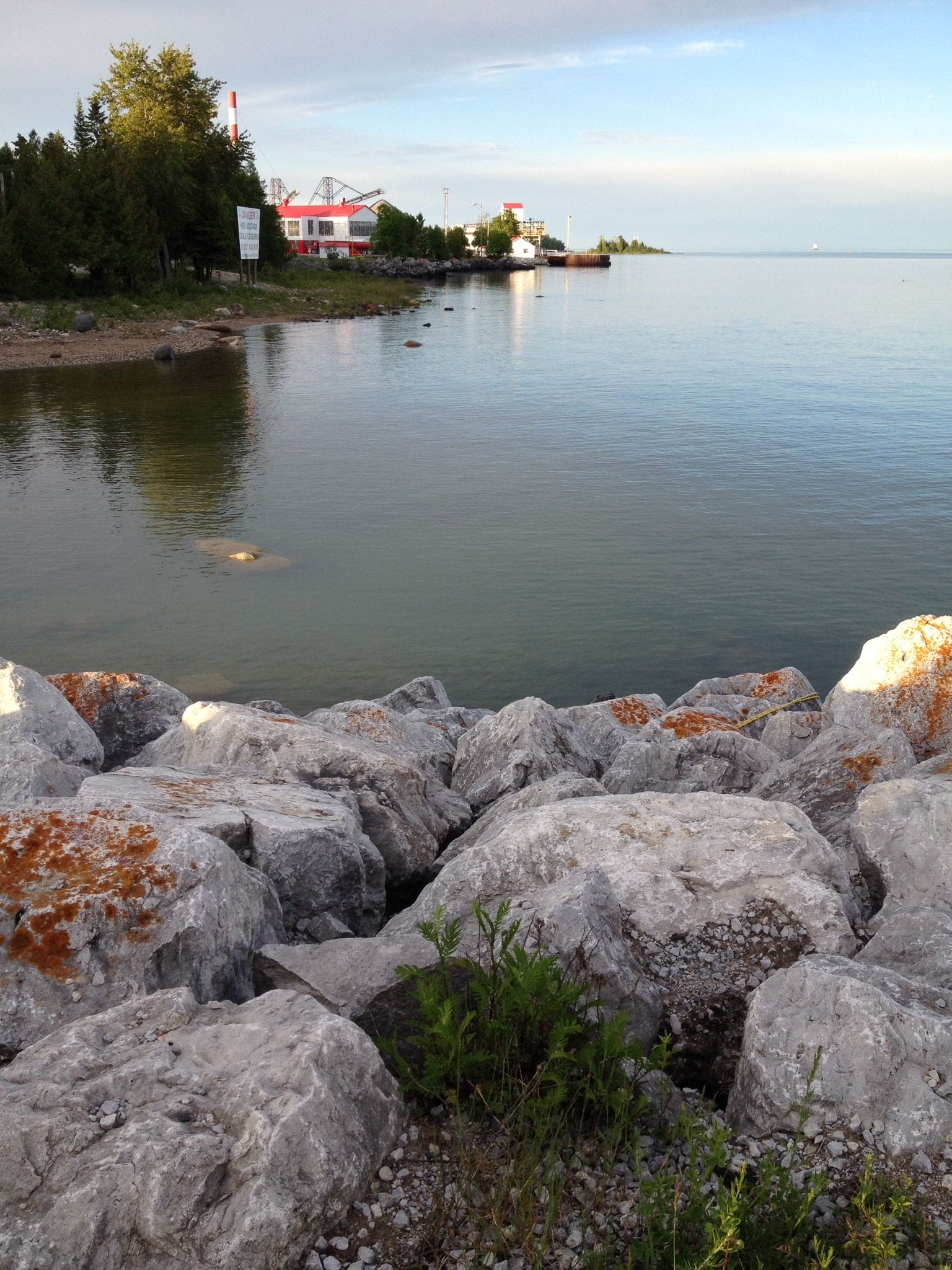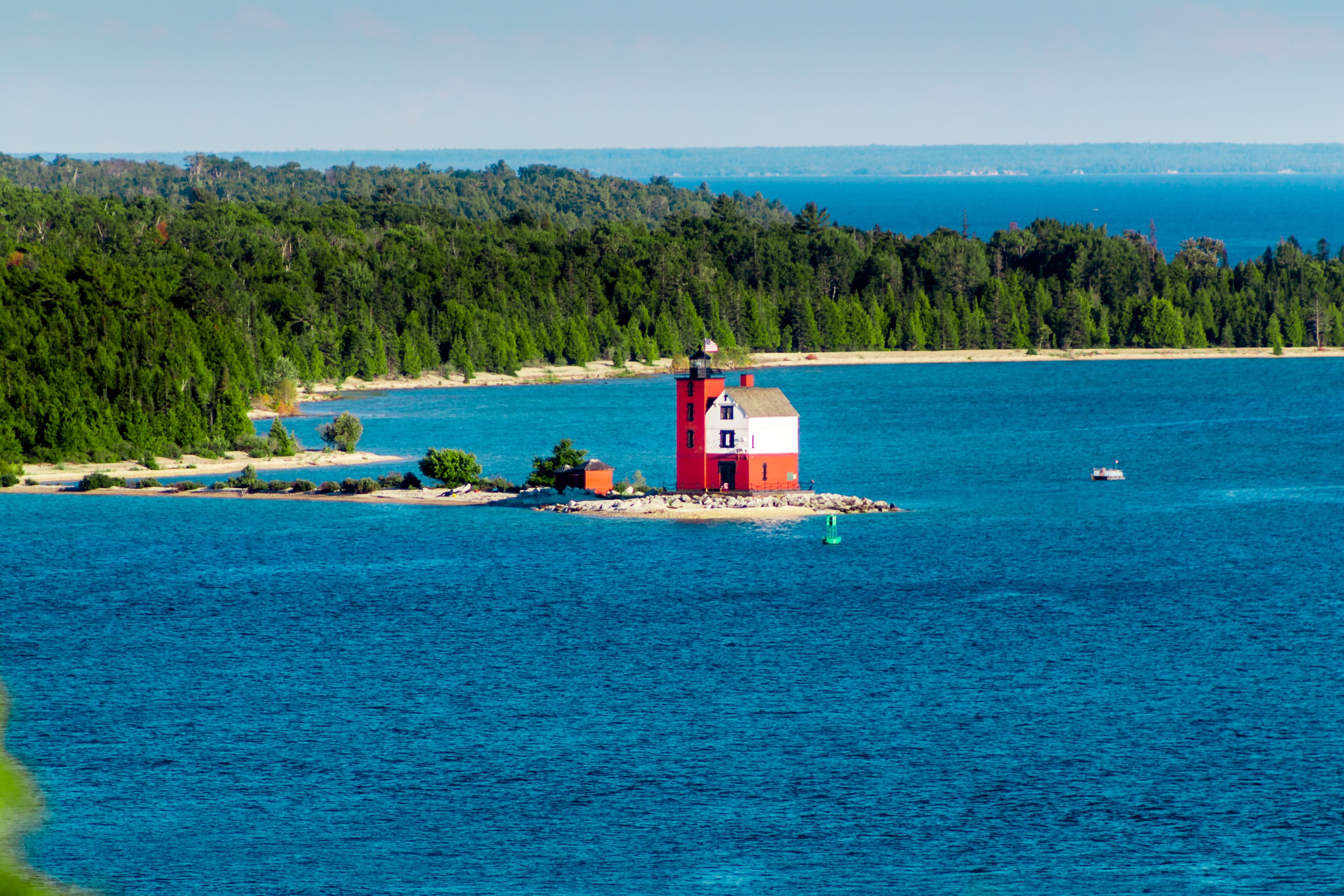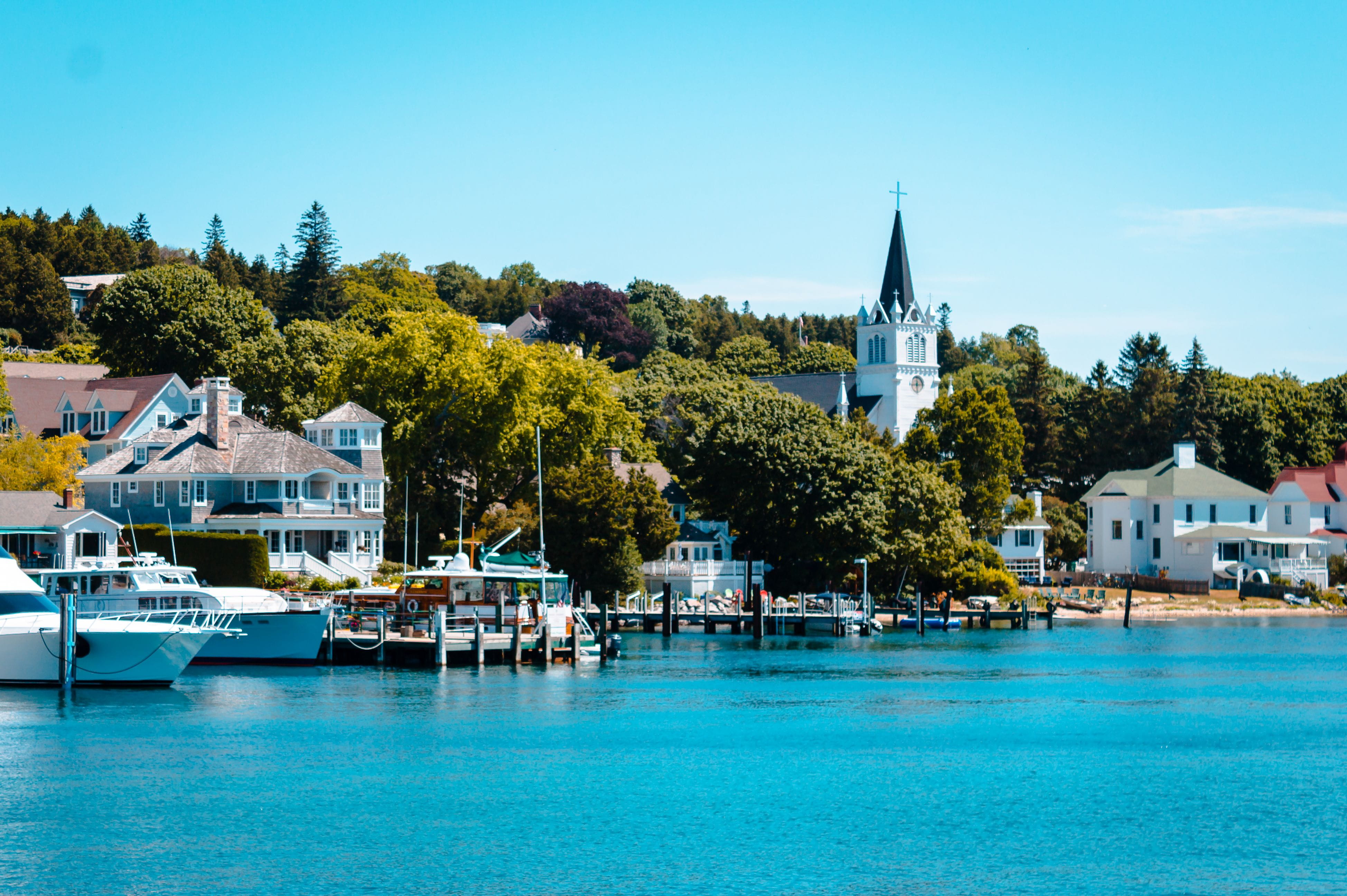
Sugar Island, located about 30 minutes from Bay Mills, Michigan, is a unique and tranquil destination in Michigan's Upper Peninsula. Known for its natural beauty, rich Indigenous history, and peaceful rural atmosphere, Sugar Island offers a distinct experience for visitors seeking an off-the-beaten-path adventure. Here’s a comprehensive overview of what makes Sugar Island special, including its geography, history, and what to expect when visiting.
Sugar Island sits in the St. Marys River, just southeast of Sault Ste. Marie and about half an hour from Bay Mills. The island is accessible via a short car ferry ride from the mainland, making it both secluded and easy to reach. Sugar Island is known for its quiet, rural landscape, with forested areas, wetlands, and scenic shorelines. It is a haven for outdoor enthusiasts, offering opportunities for fishing, boating, kayaking, and wildlife observation. The island is sparsely populated, with a small year-round community and a number of seasonal residents. There are no large towns or commercial centers, so visitors can expect a peaceful, nature-focused retreat. The island is also significant for its Indigenous heritage, being home to members of Bay Mills Indian Community & the Sault Ste. Marie Tribe of Chippewa Indians. Visitors should be prepared for limited amenities — there are no hotels or major tourist attractions, so it's ideal for those seeking solitude, natural beauty, and a slower pace of life.
Sugar Island Fest: This annual summer festival is a highlight for both locals and visitors. It features live music, local crafts, food vendors, a dance floor, and activities for all ages—including a beanbag tournament, children’s play areas, and camping. The festival is a community-driven event that brings together volunteers and musicians for a weekend of entertainment and fun.
Disconnect from Technology: Many accommodations, like the Sugar Island Resort, intentionally lack cable TV and internet, encouraging visitors to enjoy a peaceful, unplugged retreat.
Cottages and Fishing Resorts: The island is dotted with cottages and small fishing resorts, offering a rustic, off-the-grid lifestyle with amenities like boat rentals and community fire pits.
Freighter Watching: Due to its proximity to the Soo Locks, you can watch large freighters pass by the island, which is a unique sight for visitors.
Potential UN Headquarters Site: Historically, Sugar Island was once considered as a potential location for the United Nations Headquarters in 1945—a quirky historical footnote.
Ferry Access: The island is accessible only by a 24-hour car ferry from Sault Ste. Marie, adding to its secluded charm.
While Sugar Island itself is tranquil and nature-focused, nearby Sault Ste. Marie offers attractions such as the Soo Locks, Kewadin Casino, museums, and historic sites if you’re looking to explore the broader area.
Neebish Island is a remote, scenic island in Michigan’s Upper Peninsula, located in the St. Marys River between Lake Superior and Lake Huron, about 45 minutes from Bay Mills, Michigan. It is prized for its natural beauty, quiet rural character, and unique history.
The island’s attractions are directly shaped by its past:
While Neebish Island’s population has declined and shifted toward seasonal residency, new arrivals tend to absorb the established island culture of dedication, resilience, and neighborliness. The island’s history is not just preserved in its landmarks but is lived daily through the values and practices of its community.

The Les Cheneaux Islands are a picturesque archipelago of 36 small islands in Lake Huron, located along 12 miles of shoreline in Michigan’s southeastern Upper Peninsula, about 45 minutes from Bay Mills, Michigan. Renowned for their natural beauty, rich history, and vibrant resort culture, these islands offer a unique blend of relaxation, adventure, and tradition.
Government Island, the only public island in the Les Cheneaux Islands, is celebrated for its natural beauty and rustic outdoor experiences. Here are the main recreation opportunities and attractions:
Drummond Island, about one hour from Bay Mills, Michigan, is one of the Upper Peninsula’s most remarkable destinations — known for its size, wild beauty, unique geology, vibrant recreation, and rich history. Drummond Island is a premier destination for outdoor adventure, natural exploration, and unique local experiences. Its diverse landscapes, extensive public lands, and vibrant community offer something for every visitor, in every season.

Mackinac Island, located in Lake Huron at the eastern end of the Straits of Mackinac, is one of Michigan’s most iconic and beloved destinations. Approximately one hour from Bay Mills, the island is world-renowned for its historic charm, car-free streets, natural wonders, and vibrant tourism scene.
Geography and Setting
History and Heritage
Climate
Mackinac Island State Park
Covering over 80% of the island, this expansive park features dramatic limestone bluffs, lush forests, rocky beaches, and more than 70 miles of trails. It’s ideal for hiking, biking, horseback riding, and exploring iconic natural landmarks like Arch Rock and Skull Cave. The park’s scenic beauty and accessibility make it the heart of outdoor adventure on the island.
Fort Mackinac
This well-preserved 18th-century fort sits high above the harbor, offering panoramic views and a deep dive into military history. With costumed interpreters, interactive exhibits, and live demonstrations, Fort Mackinac brings the island’s past to life for visitors of all ages.
Mackinac Island State Park Visitors Center
One of the island’s most famous natural landmarks, Arch Rock is a striking limestone arch 146 feet above Lake Huron. It’s accessible by hiking, biking, or carriage tour, and is a must-see for its breathtaking views and geological significance.
Grand Hotel
An icon of Victorian elegance, the Grand Hotel boasts the world’s longest porch and stunning gardens. It’s a destination in itself, offering afternoon tea, historic ambiance, and panoramic views of the Straits of Mackinac. The hotel hosts events and is a favorite for both guests and day visitors.
Horse-Drawn Carriage Tours
With motor vehicles banned, horse-drawn carriage tours are a quintessential way to explore Mackinac Island. These guided rides provide historical insights and a leisurely pace to enjoy the island’s scenery and landmarks.
Biddle House, featuring the Mackinac Island Native American Museum
This historic home and museum highlight the island’s indigenous heritage, offering exhibits on Anishinaabek culture and the island’s early history. It’s an essential stop for understanding Mackinac’s deep Native American roots.
The Original Mackinac Island Butterfly House Gift Shop
A delightful spot for families and nature lovers, the Butterfly House is home to hundreds of free-flying butterflies from around the world. Its tropical gardens and educational programs make it a serene and enchanting experience.
Historic Downtown and Fudge Shops
Downtown Mackinac Island is lined with charming shops, historic buildings, and world-famous fudge makers. Strolling these streets offers a taste of the island’s Victorian-era ambiance and a chance to sample its signature sweet treat.
The Richard & Jane Manoogian Mackinac Art Museum
This museum showcases exceptional collections of Mackinac-related art and photography, providing a cultural complement to the island’s natural and historic attractions.
Old Mackinac Point Lighthouse - A Must-See

The Old Mackinac Point Lighthouse is a must-see landmark because it is both a striking piece of maritime history and an immersive visitor experience at the gateway to Michigan’s Upper Peninsula. Here’s why it stands out:
Mackinac Island’s car-free tradition is one of its most defining and cherished features, setting it apart from nearly every other community in the United States. This unique policy originated in 1898, when the arrival of the first “horseless carriage” caused chaos by frightening horses, which were — and still are — central to island transportation and daily life. Local carriage drivers and residents quickly petitioned the village council, leading to an immediate ban on automobiles to ensure the safety of people, horses, and property. The Mackinac Island State Park Commission extended the ban to the state park in 1901, and the policy has remained in place for over 125 years.
The ban was not only a practical response to safety concerns but also a conscious effort to preserve the island’s natural beauty, historic charm, and tranquil atmosphere. Without cars, Mackinac Island feels like a living museum, where visitors can experience Victorian-era streetscapes, well-preserved historic buildings, and a slower pace of life. Transportation is by foot, bicycle, or horse-drawn carriage, making the island safe, peaceful, and exceptionally scenic.
Today, the car-free tradition is a point of pride for residents and a major draw for visitors, offering a rare opportunity to step back in time and enjoy a destination untouched by modern traffic and noise. Emergency vehicles are the only exceptions, ensuring public safety without compromising the island’s unique character. This enduring policy has helped Mackinac Island maintain its reputation as a “Victorian-era escape” and one of America’s top car-free havens.

Mackinac Island is renowned for its dramatic natural wonders—unique geological features and scenic landscapes shaped by ancient seas, glaciers, and the passage of time. Here are the most celebrated natural wonders you’ll find on the island:
Arch Rock
A breathtaking natural limestone arch soaring 146 feet above Lake Huron, Arch Rock is the island’s most iconic and photographed natural feature. Formed over thousands of years by wind and water erosion, it frames the sparkling blue waters below and is steeped in Native American legend, believed to be a gateway to the spirit world.
Sugar Loaf
The largest limestone stack on the island, Sugar Loaf rises 75 feet from the forest floor in the island’s center. It’s a striking remnant of ancient geological processes and surrounded by legends and folklore.
Mackinac Island State Park
Covering over 80% of the island, the park preserves diverse landscapes — dense forests, open meadows, rugged bluffs, and rocky beaches. With more than 70 miles of trails, it’s a haven for hiking, biking, birdwatching, and nature exploration. The park includes interpretive trails like the Botanical Trail (with 600+ plant species) and the Native American Cultural History Trail.
Skull Cave
A small but storied cave in the island’s interior, Skull Cave is famous for its role in local legend and history—once used as a refuge and burial site.
Cave of the Woods & Eagle Point Cave
These secluded caves offer quiet retreats and unique geological interest. Eagle Point Cave, perched on a bluff, also provides excellent birdwatching and lake views.
Tranquil Bluff
A serene, less-traveled bluff with sweeping views of Lake Huron and the island’s forests. It’s ideal for those seeking solitude and natural beauty.
Robinson's Folly
A dramatic cliff on the East Bluff, Robinson’s Folly is a favorite sunrise spot, offering panoramic vistas over the water.
Sunset Rock
Located on the island’s west side, Sunset Rock is the perfect spot to watch the sun dip below Lake Huron, painting the sky with vibrant colors.
Crack-in-the-Island
A literal crack in the island’s limestone foundation, this quirky geological feature is a fun stop for explorers and families.
Botanical Diversity
The island is home to more than 600 species of plants and flowers, best explored along the Botanical Trail, which features interpretive signs and diverse habitats.
Mackinac Island’s natural wonders — like Arch Rock, Sugar Loaf, Skull Cave, and its vast state park—offer stunning scenery, fascinating geology, and rich legends. Whether you’re hiking, biking, or simply taking in the views, these features are central to the island’s enduring appeal for nature lovers and adventurers alike.
Trails
Horseback Riding & Carriage Tours
Water Activities
Golf
Play a round at one of the island’s historic or scenic golf courses, including the Grand Hotel’s Jewel Golf Course and Mission Point’s putting green.
Wildlife & Nature Observation
Other Activities
Voyageur Island is a hidden gem located in the middle of the St. Marys River near Sault Ste. Marie, Michigan, and is easily accessible from Bay Mills—about a 30-minute drive to Sault Ste. Marie and then a 30-minute paddle by kayak or paddleboard to the island itself. This small, scenic island is celebrated for its tranquil atmosphere, excellent paddling opportunities, and unique blend of rustic and comfortable amenities.
Lime Island is a remote, forested island in the St. Marys River, near the eastern tip of Michigan’s Upper Peninsula and the international border with Canada. It is about two to three miles from the mainland community of Raber and is accessible only by private boat or charter. The island is managed as the Lime Island State Recreation Area and is known for its history, natural beauty, wildlife, and rustic recreational opportunities.
Rotary Island Park is a scenic and activity-rich park located on a small island in the St. Marys River, adjacent to Sault Ste. Marie, Michigan, and just a short drive from Bay Mills. This park is a favorite for locals and visitors alike, offering a blend of riverfront recreation, family amenities, and some of the best freighter-watching in the Upper Peninsula.
Clyde’s Drive-In: Just 100 yards away, this classic car-hop eatery is a local favorite for burgers and shakes, perfect for a meal before or after your park visit.

| User mode: | Stranger/Member |
| Logged In: | Not Logged In/Logged In |
| Trips: | |
| Working trip index: | 1 |
| Trip edited: | No |
| Trip has saves: | No |